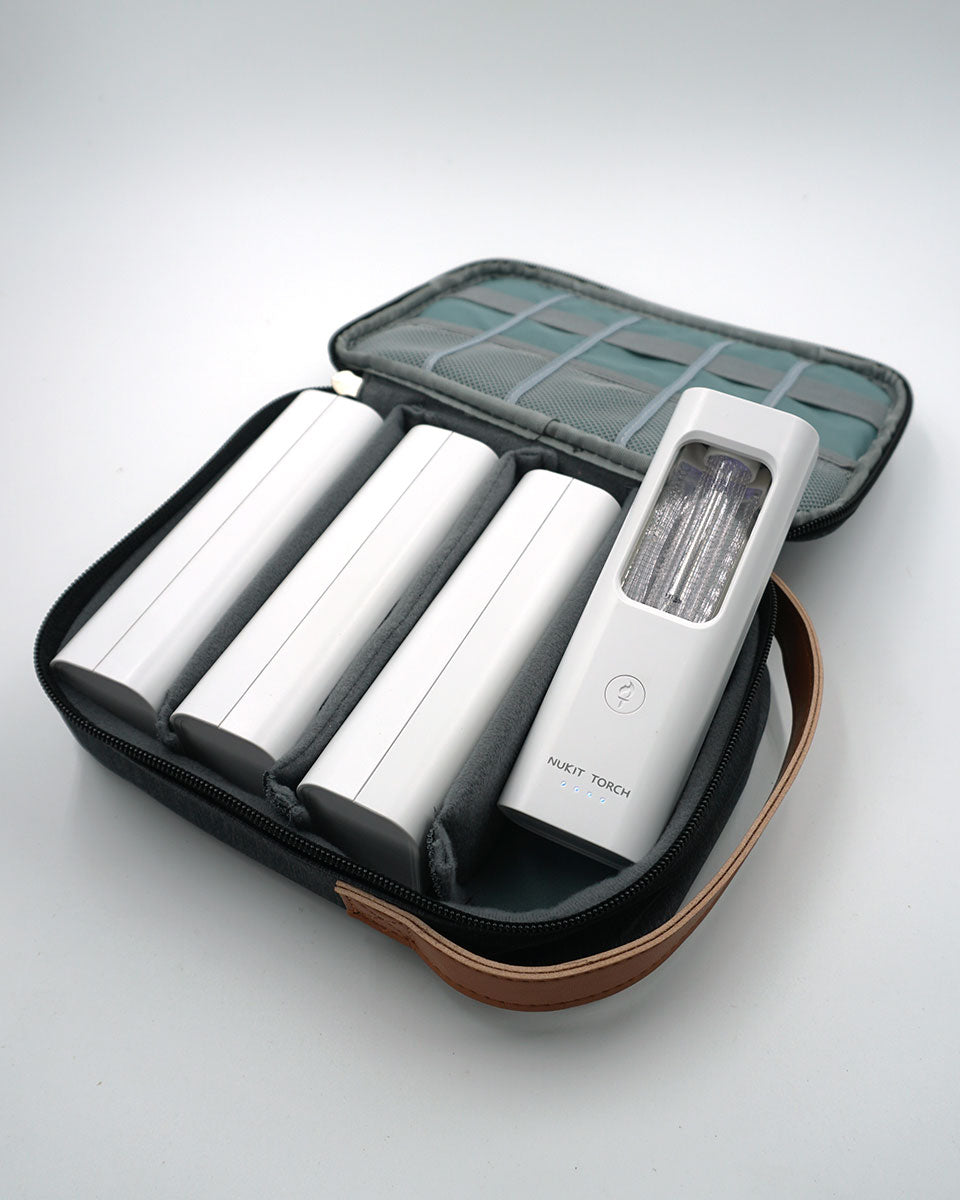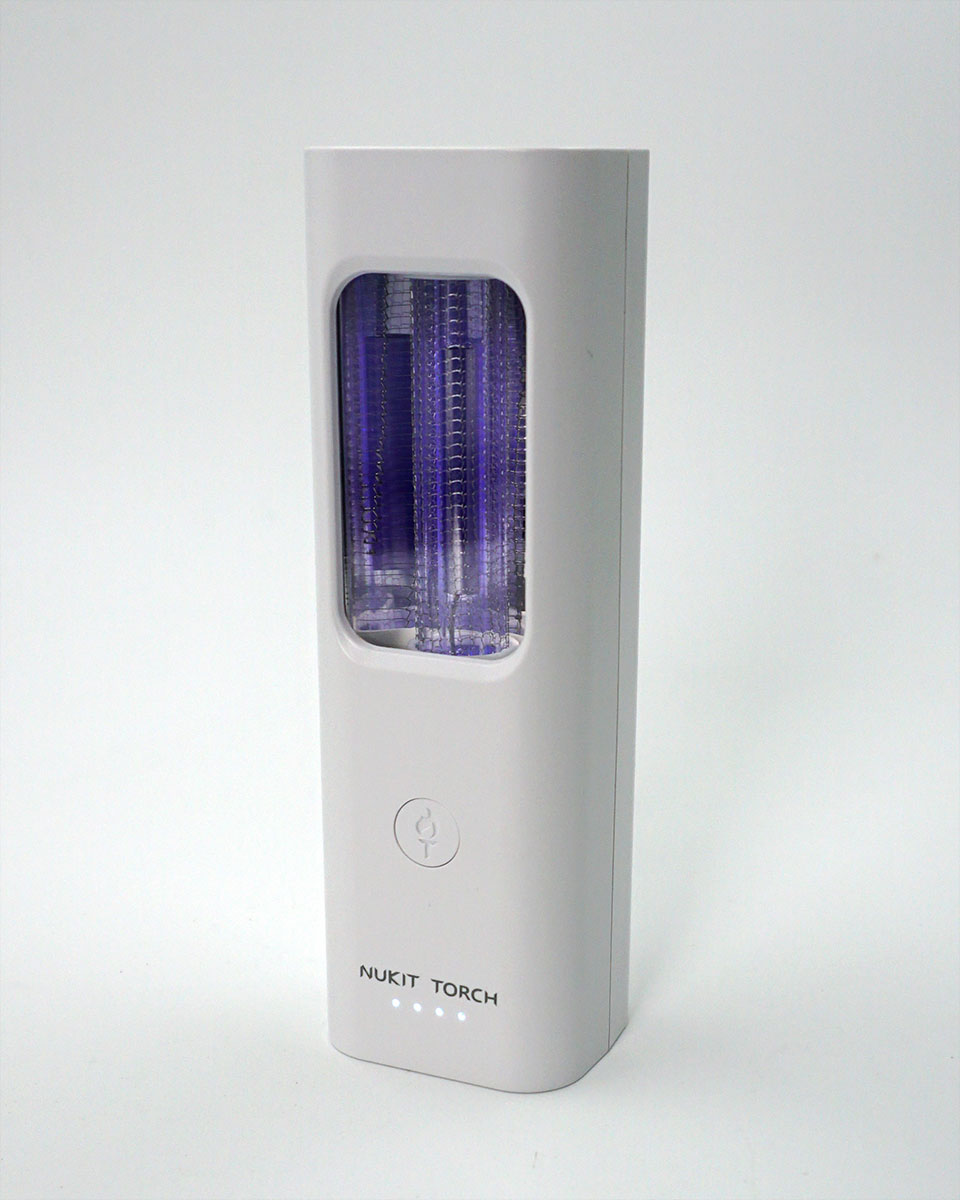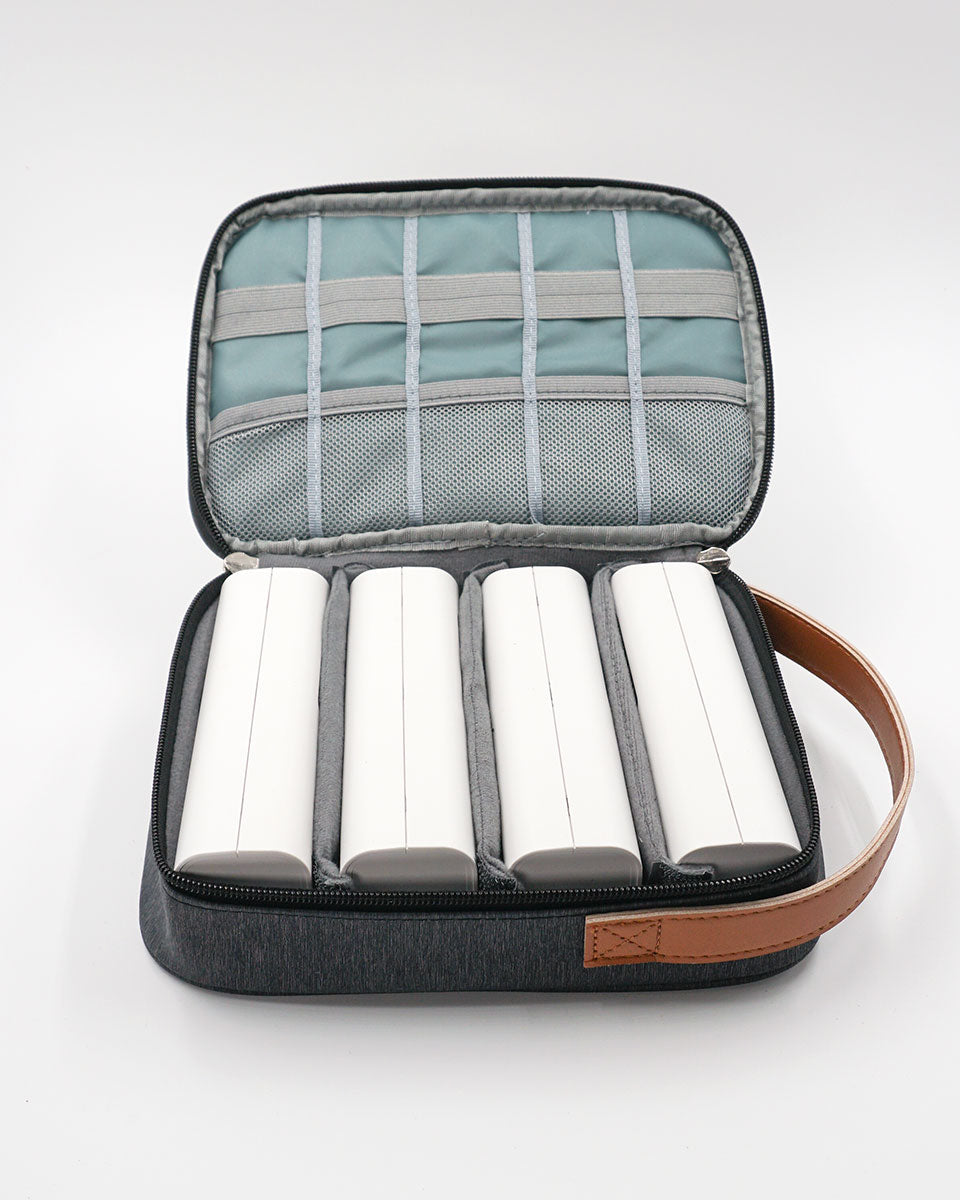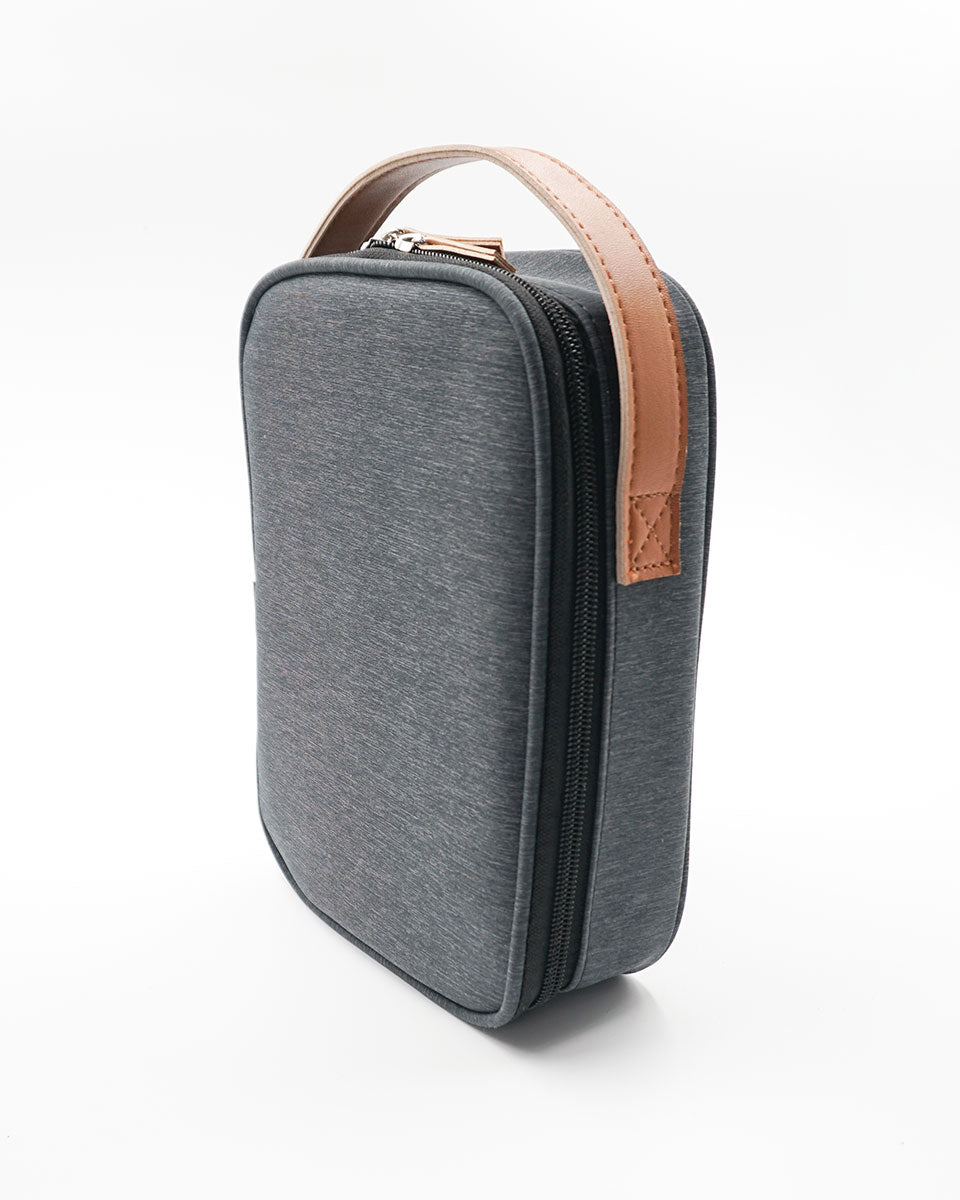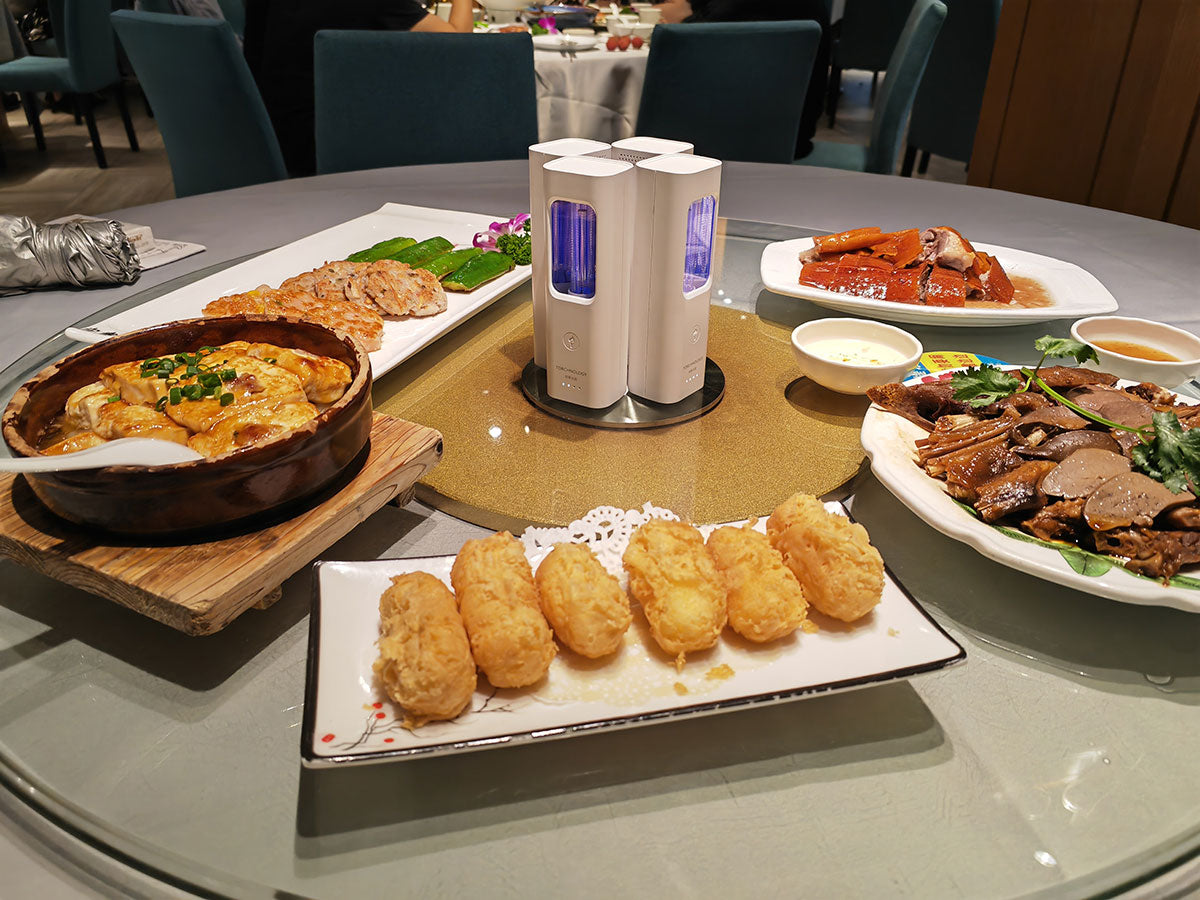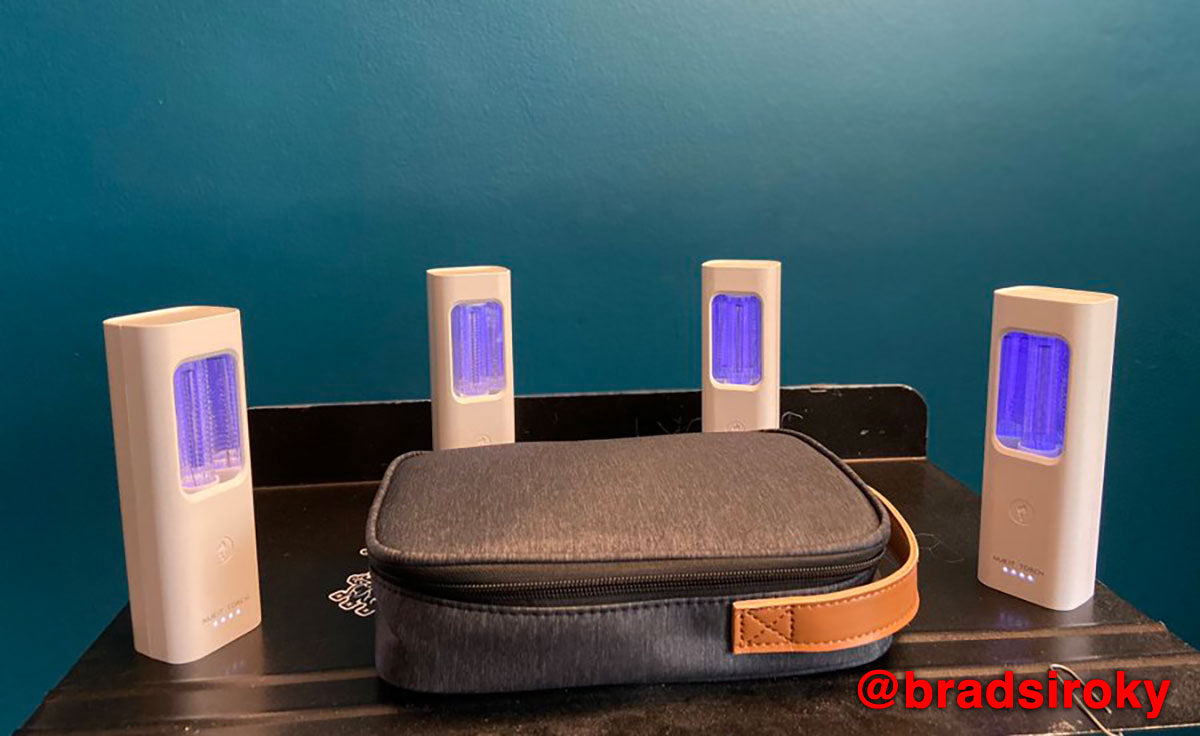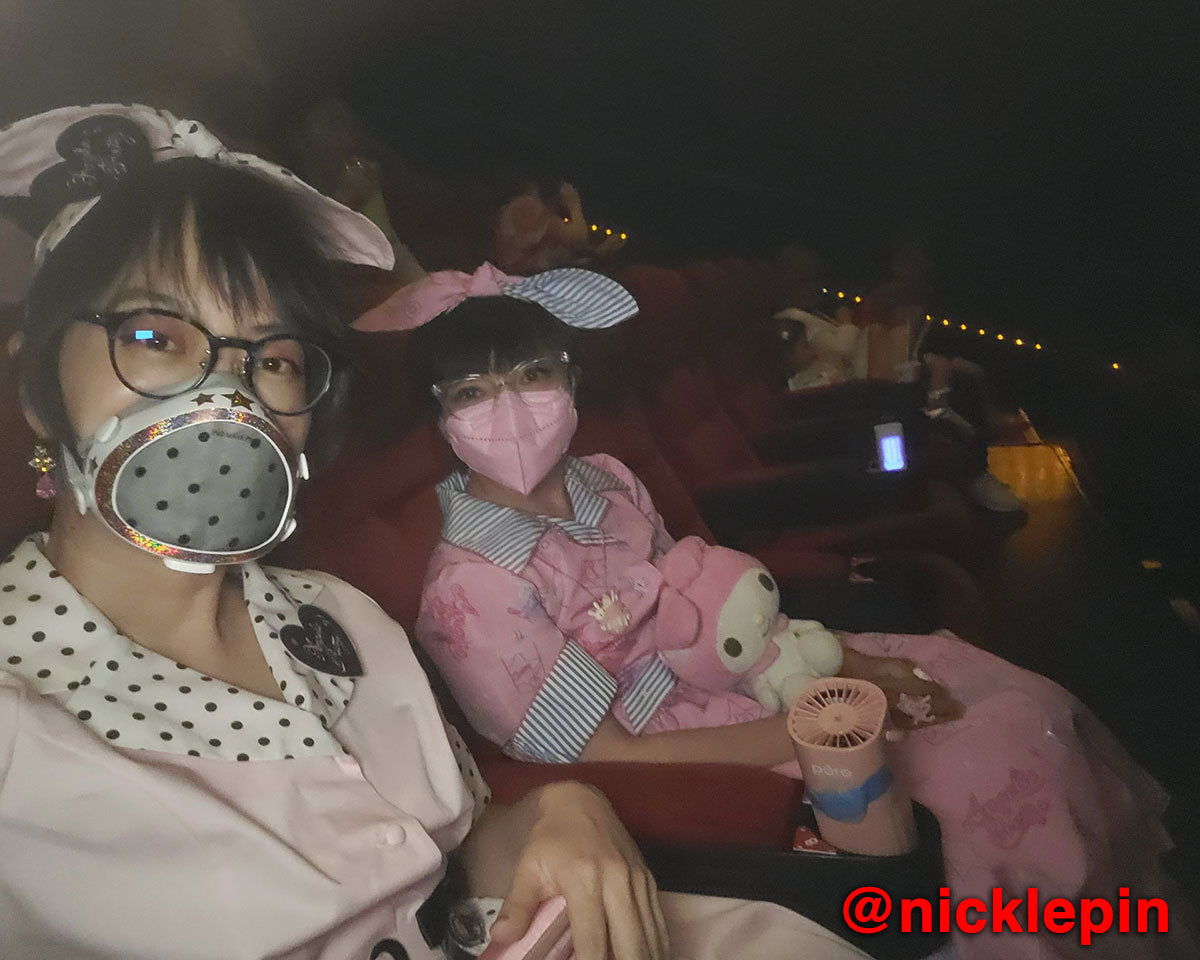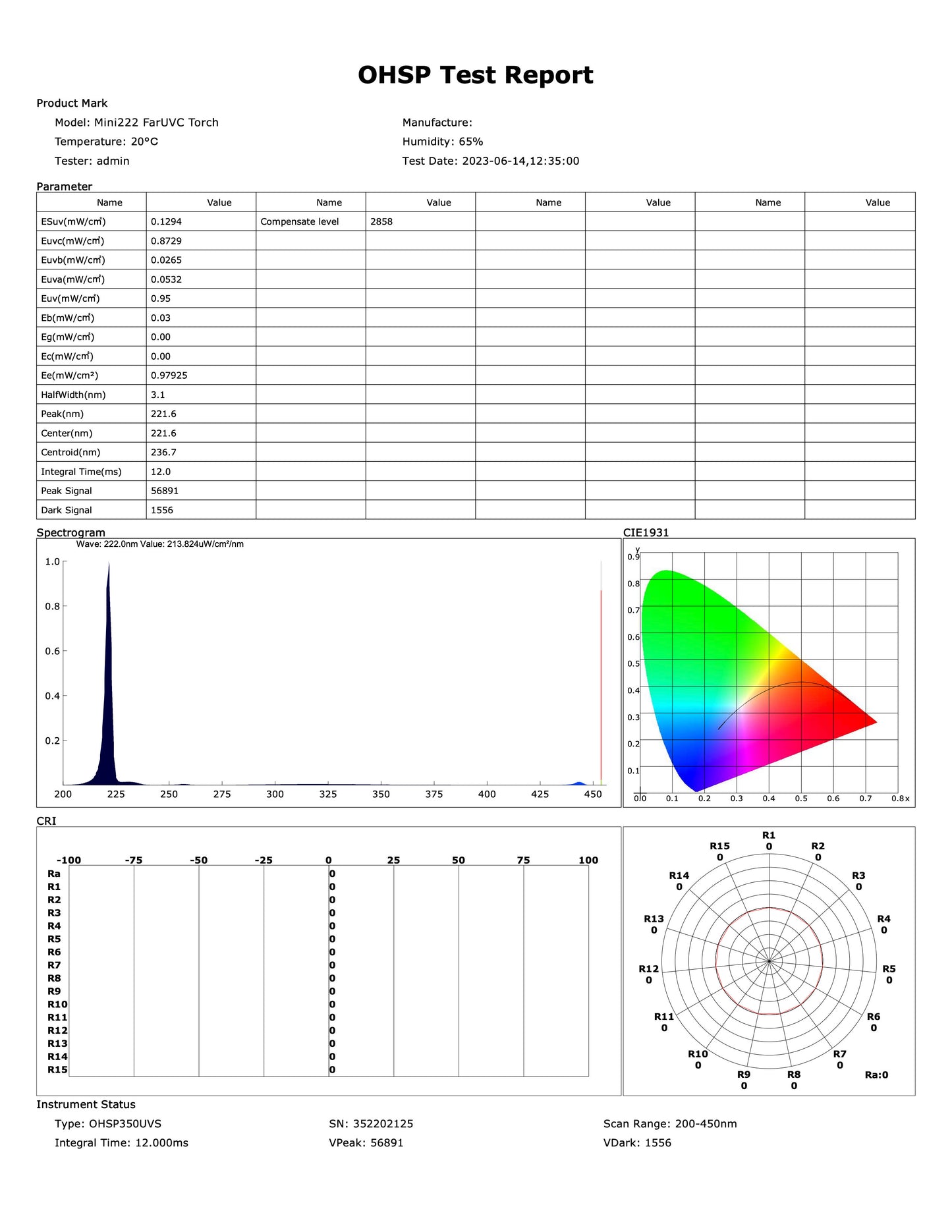Cyber Night-Market
Nukit Torch Far-UVC Lights (Set of Four)
Nukit Torch Far-UVC Lights (Set of Four)
Couldn't load pickup availability
Protection from airborne pathogens using eye and skin safe, 222nm Far-UVC
*Sorry, we can no longer send to Canada.
Suggested use:
Assuming no more than four hours of use in a single day, and an approximate room size of 9-12m², each lamp should be positioned no closer than 50cm away from a room occupant. The more widely the lamps are spread, the more air volume will be exposed. If there are children or pets present, the lamps should be placed well out of reach.
For more information, see: How to use your Nukit Torch Far-UVC Lights
Specifications (Each lamp):
Size: 42mm Wide, 50mm Deep, 154mm High
Weight: 0.2kg
Power consumption: 3W
UV Wavelength: 222nm Far-UVC
Beam angle: 120º Horizontal, 90º Vertical
222nm cut filter: Yes
Battery life: 4-5hrs
Expected Lifespan: 3000+ Hours
Specifications (Complete kit in carrying case):
Size: 240mm Wide, 75mm Deep, 180mm High
Weight: 1.1kg
Third Party Testing
Far-UVC researchers Ewan Eadie, The OSLUV Project (Aaron Collins aka MaskNerd), and Don Milton all have Nukit Torch kits with no issues found that they made us aware of. The published test data from Ewan Eadie, along with UL, CE, and FCC certifications, are linked below.
Nukit Torch Spectral Data & Safety Assessment- Ewan Eadie
GB/T 18801-2022 Air cleaner Appendix H
Virus Removal Rate (Human Coronavirus HCoV-229E)
Nukit Torch CE Certificate of Conformity
Nukit Torch FCC Declaration of Conformity
As seen in The Courier- Evening Telegraph
Modeling:
This Computational Fluid Dynamic (CFD) model uses the data from the above GB/T 18801-2022 Air cleaner Appendix H Virus Removal Rate (Human Coronavirus HCoV-229E) test, and the Nukit Torch spectral data, to show exactly how four Torches set up on a table inactivate pathogens in the entire room.
This isn't a simulation or an illustration- it's more like a pie chart. OpenFOAM takes the raw input data- all of which comes from third party labs, and simply displays what happens in an easy to understand way.
Comparison:
 |
 |
|
| Cost | $344.75 | $344.75 |
| Number of Units Included* | 4 | 1 |
| Total Power | 12w (3w x 4) | 3w |
| Battery (each) | 4000mAh | 3350mAh |
| 222nm Cut Filter | ✅ | ✅ |
| Filter Size (each)* | 19.7 cm3 | 9.4 cm3 |
| 3rd Party Lab Tested | ✅ | ❌ |
| UL, CE and FCC certifications | ✅ | ❌ |
| Nice Clicky Metal Button | ❌ | ✅ |
| Available in Purple | ❌ | ✅ |
| Includes Carrying Case | ✅ | ❌ |
*Multiple emitters and larger filter sizes allow for broader, more diffuse coverage which is far more effective for pathogen inactivation according to Eadie Et al.
Description:
The germicidal properties of ultraviolet light are well established and have been in use for almost 100 years, but that effectiveness has always come at a price- the potential for eye and skin damage. Far-UVC, the portion of the ultraviolet spectrum that ranges from 200nm to 230nm is often described as “eye and skin safe” but is perhaps more accurately described as “safer”. There is still an exposure limit- just much, much higher than with other portions of the UV spectrum.
Because of its relative safety, Far-UVC technology has tremendous potential and has attracted companies engaged in dishonest, even dangerous, marketing practices. Selling lamps that are not filtered so emit at unsafe portions of the UV spectrum above 230nm, that are far too low powered to be effective, or that make inflated claims of efficacy- including that Far-UVC is comparable to wearing a well-fitted N95 mask (it is not) or a substitute for upgraded filtration and ventilation in buildings (it is not).
New Far-UVC guidelines are being developed, and new products are being brought to market. For now, the safest way to use Far-UVC is as an additional layer, and not change your behavior because you have access to Far-UVC. We all have to eat anyway- eating with Far-UVC is safer. We have to go to the dentist anyway- going with Far-UVC is safer. Children need birthday parties and playdates- and even with kids old enough to mask, those masks slip or can be dislodged. With carefully positioned Far-UVC, these activities are safer. But if we are going to take a long flight- having a Far-UVC device is not a reason to fly unmasked. Far-UVC is a useful layer on top of masking, and adds a measure of safety, but it should never be considered justification to unmask in situations you normally would wear one. (If you have trouble finding a comfortable mask, we recommend the CanadaMasq Q100.)
Early on in the pandemic, it was hoped that a single, small Far-UVC device could offer “near-field” protection- create a zone of light around a person that would destroy pathogens before they were inhaled. Devices- including wearable ones, were made and tested, but in the end, the math for a single small emitter, providing any near-field protection, just does not work.
Pathogens need to be exposed to a certain amount of energy to be inactivated- joules or power over a given duration. A single 3-watt, low-power Far-UVC emitter does not have enough time to inactivate airborne pathogens to a significant degree before they are inhaled. If you increase the power- and so shorten the exposure time needed, it is no longer safe to have the emitter immediately next to the user for hours or days at a time.
When using Far-UVC, our goal is to get as much power (joules) into air volume as possible without exceeding the daily exposure limits of the occupants- so you need to avoid “hot spots” created by high-wattage Far-UVC emitters. Diffusing lenses are one way to spread the light more evenly throughout a room; another is using an array of small Far-UVC emitters instead of one or a few large emitters- and that is what the Mini Far-UVC kit does.
The Mini Far-UVC kit is sold as a package of four battery-powered, three-watt Far-UVC emitters with a carrying case and USB charging cable. That is a total of 12 watts- the minimum that would have an effect in a small (9-12m²) room.
12-watts, for a few hours a day, is also a very safe dose of Far-UVC that people can be trusted to self-administer without professional UV meters and installation equipment or issues involving secondary compounds that might arise with fixed, higher wattage installations intended for continuous use.
The set of four emitters are intended to be placed throughout a small room to expose a large volume of air without creating hot spots of potentially high exposure. They are not sold individually because one, 3-watt emitter simply would not have any meaningful effect based on the data we now have. If anyone tries to sell you a single 3-watt UVC emitter as any kind of mitigation tool- you are being scammed. The data simply does not support it at present. Please do not split up the set or share individual units- they are designed to be used together.
The price for four Mini Far-UVC lamps is the same price as just one of the competing portable lamps of comparable power. At the moment, this Mini Far-UVC kit offers the lowest price per filtered watt of any battery-powered Far-UVC emitter. It is an imperfect solution- but during its 3000-hour operating life, it should offer a meaningful layer of additional protection and bridge the gap until we have more solid guidelines.
General overview of Far-UVC:
Intro to Far-UV by Joey Fox (Highly recommended source on air quality issues)
Could UV Light Reduce the Spread of Covid-19 in Indoor Spaces?
Disinfecting the air with far-ultraviolet light
Great collaborative Twitter threads from Siyuan Wang, Mike Famulare, and Joey Fox on why near-field, low-wattage Far-UVC doesn't work (and so why we needed to increase the power output x4 and distribute the emitters to get any meaningful effect).
Citations for effectiveness:
Far-UVC light (222 nm) efficiently and safely inactivates airborne human coronaviruses
Far-UVC (222 nm) efficiently inactivates an airborne pathogen in a room-sized chamber
Far UV-C radiation: An emerging tool for pandemic control
Citations for safety:
Extreme Exposure to Filtered Far-UVC: A Case Study
Exposure of Human Skin Models to KrCl Excimer Lamps: The Impact of Optical Filtering
Mini Far-UVC Lights have a 90 day warranty against manufacturing defects when the product is used as intended.
That said, please contact us if there’s a problem that seems unreasonable, and we will do our absolute best to make it right. We’d rather underpromise and over-deliver on service than the other way around.
